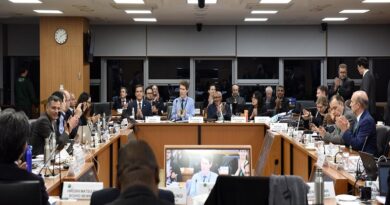UNFCCC secretariat, 38 other UN agencies, entities achieved climate neutrality in 2016
The United Nations Framework Convention on Climate Change (UNFCCC) Secretariat in Bonn, Germany along with 38 other UN agencies and entities, achieved climate neutral status for 2016, according to the latest edition of the Greening the Blue report.
This was made possible by implementing a wide range of sustainable and energy efficiency measures and by offsetting unavoidable carbon emissions – mainly from travel – through carbon reduction schemes in developing countries.
UN Climate Change Executive Secretary Patricia Espinosa said: “We have been reducing and compensating unavoidable emissions since 2012 and are committed to continue doing so as we walk the climate talk. We are happy to have helped 28 sister agencies and events, such as the UN Environment Assembly, offset residual emissions equal to around 25% of the UN system’s carbon footprint. We take special pride in the last two UN Climate Change conferences which we have organized not only for being climate neutral but also International Standards Organization certified.”
UN Climate Change achieved a reduction in direct greenhouse gas emissions generated from its activities – from 3,333 tonnes of carbon dioxide equivalent (tCO2eq) in 2015 to 3,177 tCO2eq in 2016.
Of that amount, 96% emissions originated from air travel, 3% were related to UNFCCC facilities, and 1% to other forms of transport. Emissions per staff member were 6.35 tCO2eq which is less than the UN average of 7.18 tCO2eq per capita.
UN Climate Change closely monitors the greenhouse gas emissions from its headquarters in Bonn, Germany, and travel operations worldwide, and takes measures to reduce its environmental footprint. Some of the carbon emissions reduction efforts at the secretariat include: 100% electricity from renewable sources; headquarters building built and operated to high environmental standards: partly “zero emission”, hydro-geo-thermal energy supplemented by district heating, solar power, local natural, smart building technology control systems; ongoing replacement/upgrade and use of office equipment to higher energy efficiency: lighting, cars, bicycles, shared printers and 100% recycled or certified paper; waste separation, recycling, incineration of residuals, no landfilling.
Others are replacement of printed with on-line publications and conference documentation; sustainable Procurement: vendor and product sustainability are obligatory selection criteria and approval of use of budgetary resources for emission reduction investments and offsets
Additionally, the secretariat offset balance of emissions from its activities by purchasing and cancelling Adaptation Fund Certified Emissions Reductions.
The Greening the Blue report, the UN’s annual report details the environmental impacts of the UN system’s facilities and operations in 2016. The report includes data from 67 UN entities that reported their greenhouse gas emissions for 2016, covering over 250,000 personnel. The United Nations is committed to achieving climate neutrality across the UN system by 2020.
The data reveals that the UN emitted 1.90 million tCO2eq in 2016 – an average of 7.18 tCO2eq per capita. Facilities (headquarter offices, field offices, warehouses etc.) accounted for 46% of the UN’s greenhouse gas emissions, air travel for 42% and other travel for the remaining 12%.
Of the 67 reporting entities, 39 offset all of their reported greenhouse gas emissions for the year, making them climate neutral. Four other entities offset a portion of their 2016 greenhouse gas emissions, taking the proportion of offsets to 37% of the UN’s reported greenhouse gas emissions for 2016.




